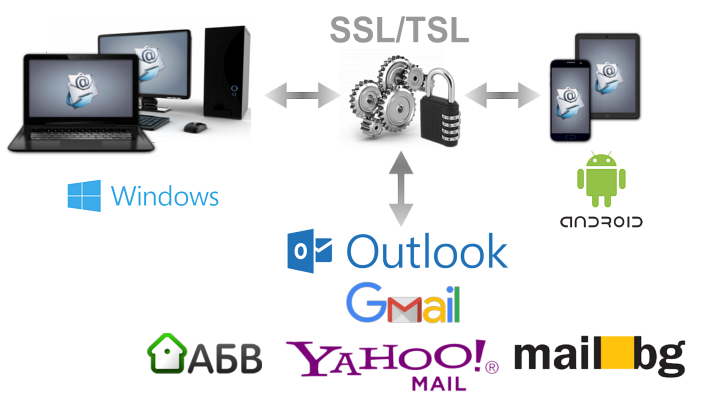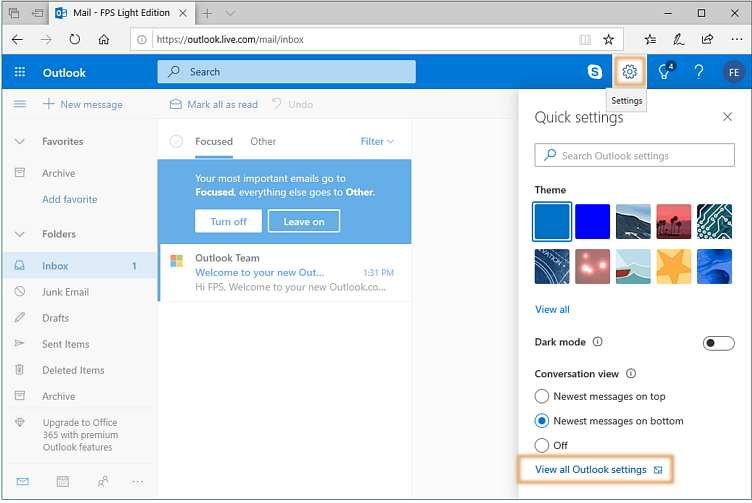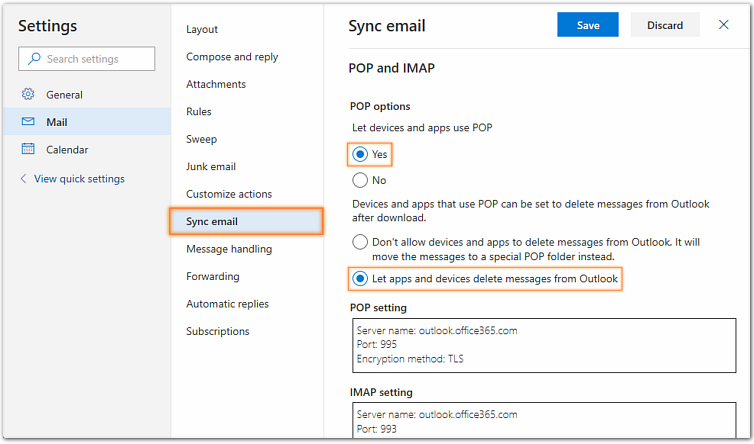LE3.1.1.4
BeMail - Protected data exchange system

EXCHANGE OF MESSAGES AND PROTECTED DOCUMENTS
Specialized module BeMail
BeMail is a specialized application for exchanging text messages and encrypted documents.
BeMail does not differ in any way from
the e-mail known to all users, but in practice is basically a different
product. Unlike e-mail, user registration is not required unless public
mail servers such as Outlook, GMail, Yahoo Mail, Mail.ru, etc. are used.
Another major difference is that you can not receive unsolicited
commercial messages (spam) at BeMail, as well as phishing attacks
against you.
Also, in the professional versions of the product, it is possible to
systematize the senders. In practice, this means full separation of the
official from personal correspondence.
With BeMail, you can send mail to any e-mail address without any restrictions.
The user can send encrypted messages and attachments using any of the
known public emails such as gmail, yahoo.com, mail.ru or other free
web-resources.

The decryption of the files or messages requires the recipient to own a
FPS whose version matches the sender's or higher. If this requirement
is not met, it may cause difficulties in the process of decryption.
BeMail allows the exchange of encrypted messages between and mobile
devices using the Android OS or between a workstation and a mobile
device. In this case, the mobile device needs a dedicated client or the
user has a subscription for the service activated.
Typical of the mobile version of BeMail is that it can also be used as
a dedicated messenger with the ability to encrypt text messages and
photos.
In versions PE and EE, the app can also be used to exchange secure voice and video.
The BeMail subscription plan includes multi-channel, anonymous mailboxes with a high level of protection.
Receive messages using POP
POP (Post Office Protocol) is the method by which electronic messages are received.
POP
connects to the mail server and reads all the messages that are there.
If specified after being read, the messages are deleted from the server.
The advantage of this method is that once a connection is established
between the computer (or the mobile device) and the server, the
messages are only available to the device that made the connection.
Many e-service providers provide users with e-mail that uses POPs.
Send messages using SMTP
SMTP (Simple Mail Transfer Protocol) is the method by which electronic messages are sent.
SMTP
is used in mail clients and web-based applications. Messages and
attachments sent to the mail server can be downloaded via POP3 or IMAP
from a local client or internet resource (such as GMail, for example).
The communication between the local client and the server is normally
via TCP port number 25 or 26. When using public web-based e-mail,
however, for the sake of higher security, the exchange takes place via
port 587.
The original SMTP specification does not include a sender
authentication method. Subsequently, the SMTP-AUTH extension is
regulated in RFC 2554 ESMTP and provides a mechanism by which customers
define the security method to the mail server.
Note: Microsoft products have built-in own Secure Password Authentication (SPA) protocol.
Protocols
In cases where BeMail is used as an e-mail, it performs exchange using Post Office Protocol, incoming messages and SMTP (Simple Mail Transfer Protocol) for outgoing mail. This is done to achieve maximum compatibility with widely used web-based e-mails.
By
default, when using a public server, BeMail uses a secure SSL / TLS
channel. In this case, port 995 is used for POP3 and for SMTP port
number 587 or 465.
Both SSL (Secure Sockets Layer) and TLS (Transport Layer Security)
serve to ensure the security of communication through the Internet.
The current TLS protocol allows applications to exchange information so
that it can not be tapped or modified by unauthorized users.
SSL is an older form of protection, but it is still widely used, despite some shortcomings.

In the LE version as a mail server,
Microsoft Outlook is used because of the convenience and reliability it
offers to users. The system settings set in the application are as
follows:
Receive messages
- POP server: pop-mail.outlook.com
- POP-port: 995
- POP Encryption Method: TLS
Send messages
- SMTP server: smtp-mail.outlook.com
- SMTP port: 587
- SMTP encryption method: STARTTLS

Note: For the LE version, BeMail's system settings can not be changed, as is the case with the higher versions of the product. Settings changes are automatic and are determined by Microsoft's security policy.
Set up Outlook to work with BeMail
In order for a user to use BeMail, the LE version requires a user profile in Microsoft Outlook.
A user account can be created by clicking the "Microsoft Outlook Settings" button in the Application System Settings panel.
As a result, this will open the default browser and load the Outlook startup page.
Another option is for the operator to open the browser that he uses and enter the address field https://outlook.com/

Once the operator has created an Outlook account, it is necessary to allow e-mail to be used by a specialized application.
To do this, select "View all Outlook settings" from the Settings field as shown on the image.

In the system settings, we chose
"Synchronization" and check the "Enable devices and applications to use
POP" [Yes] and "Allow applications and devices to delete messages from
Outlook" [Yes] as shown on the image.
The settings are saved and e-mail is ready to exchange encrypted messages and files when using BeMail as a mail client.

The actions described apply only to Outlook. For another type of public post, another sequence is used.
Information on how to set up GMail, Yahoo Mail, Mail.ru or any other
public resource can be found in the documentation of these web-based
applications.
What is important to know is that the LE version only works with
Microsft Outlook and no other Internet-based mailing applications.
IMPORTANT!
The original version of BeMail does not use web-based e-mail.
This version uses a multichannel, anonymous encrypted messaging and file exchange system.
In this case, users do not use an e-mail address to exchange
information, and no personal data is required in the registration
process.
In fact, the original version of BeMail guarantees absolute anonymity and an extremely high level of protection.
Unlike most popular emails, the original BEMMail does not require
external certificates or dynamic libraries to ensure exchange
protection.
For versions SE, SPE, PE, a system for object-relational encryption is
used, and for EE - volume-matrix, it is customized according to the
specific needs of the client.
It is a good thing after the decipherment process is complete, to
verify the integrity of the files. This is most easily done by
visualizing the content (double click on the file). This ensures that
all processes have gone right and the information has been preserved.
Contents